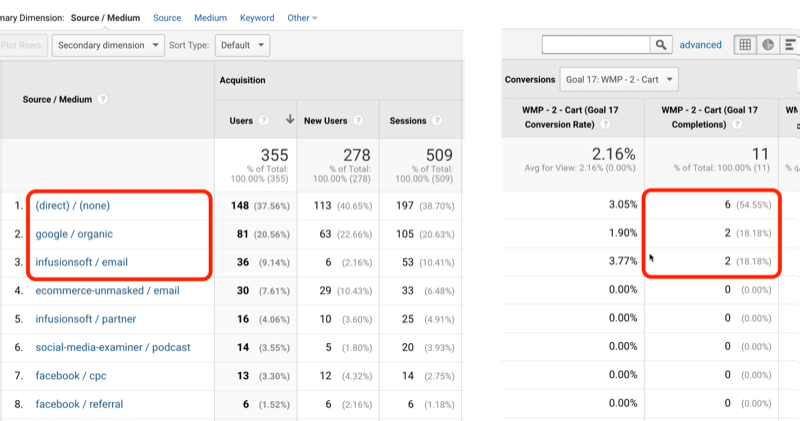What Data Is Google Analytics Goals Unable to Track: Discover the Limitations
What Data Is Google Analytics Goals Unable to Track: Discover the Limitations
Blog Article
Demystifying Google Analytics Limitations: Discover What Data Goals Can not Track
In the realm of digital analytics, Google Analytics stands as an effective device that gives beneficial understandings right into website efficiency and individual habits. However, amidst its capacities, there exist constraints that often go unnoticed. Recognizing what Google Analytics can not track is critical for a thorough grasp of data analysis and decision-making processes. From the complexities of user communication with dynamic web content to the intricacies of cross-device individual journeys, these constraints clarified locations that may remain obscured from traditional analytics viewpoints. By untangling these restrictions, a more clear image arises, enabling more informed approaches and fine-tuned insights right into customer engagement and conversions.

Customer Interaction With Dynamic Material
Individual communication with vibrant content plays a vital duty in understanding customer behavior on sites and maximizing the total user experience. By tracking customer communications with vibrant content, internet site owners can acquire important understandings right into individual involvement, choices, and habits - what data is google analytics goals unable to track.
Google Analytics supplies numerous devices to track individual interactions with dynamic content, such as occasion monitoring and online pageviews. Event tracking enables you to keep an eye on particular individual actions, like clicking a button or seeing a video clip, supplying information on just how customers engage with vibrant aspects. Digital pageviews can be made use of to track interactions that do not cause a new page load, supplying a comprehensive view of customer interaction with dynamic web content. By analyzing this information, web site owners can make enlightened choices to enhance customer experience and drive conversions.
Cross-Device Customer Journeys
Just how can modern-day analytics devices track the facility courses customers take across numerous tools in their on-line trips? Cross-device customer trips provide a considerable challenge for tracking and evaluating individual behavior precisely. As users engage with applications or sites making use of various tools such as smartphones, tablet computers, and desktop computers, it comes to be vital to understand exactly how they move between these systems to optimize individual experience efficiently.
Google Analytics encounters restrictions in tracking cross-device customer trips because of personal privacy worries and technological restrictions - what data is google analytics goals unable to track. While it can supply understandings right into specific gadgets' communications, tracking a smooth customer trip throughout several gadgets stays a difficulty. This restriction can lead to incomplete information and fragmented user understandings, making it hard for services to create a unified view of the consumer journey
To address this concern, companies can utilize sophisticated analytics devices that use cross-device tracking abilities, enabling them to acquire an extra all natural understanding of customer actions. By leveraging these devices, companies can connect the void in tracking cross-device user trips and maximize their electronic techniques for a seamless individual experience.
Offline Conversions and Acknowledgment
As companies browse the obstacles of tracking cross-device customer journeys, one more crucial facet to consider is the world of offline conversions and attribution in the world of data analytics. While Google Analytics provides beneficial insights right into on the internet customer habits, it fails when it involves tracking conversions that happen offline. This limitation postures a considerable difficulty for businesses that have both online and offline sales networks.
Offline conversions, such as purchases made in physical stores or through telephone call facilities, are vital to comprehending the complete consumer trip. Without the capability to connect these offline conversions to certain online communications, businesses may battle to accurately gauge the impact of their digital marketing efforts.
To resolve this gap, companies can discover alternate remedies such as integrating CRM systems with on the internet analytics devices or using one-of-a-kind discount codes that can be traced back to on the internet projects. By linking the space between online and offline information, businesses can get a much more comprehensive understanding of their clients' behavior and enhance their overall advertising and marketing methods.
Person Individual Recognition
In the realm of information analytics, the ability to properly identify individual users across different on the internet touchpoints is a crucial obstacle for organizations looking for to individualize and optimize their marketing techniques. While Google Analytics offers important insights into individual behavior and interactions, it falls short in making it possible for the recognition of specific people as a result of personal privacy problems and technological restrictions. Google Analytics utilizes distinct identifiers such as cookies to track individual sessions and behavior, but these do not equate to determining specific customers in an individual feeling.

Data From Secure Pages
In spite of the enhancing prevalence of secure web pages on internet sites, acquiring data from these encrypted resources provides a distinct challenge for electronic analytics platforms like Google Analytics. Safeguard web pages, suggested by HTTPS in the link, encrypt data exchanged in between the user's internet browser and the site's web server to guarantee personal privacy and safety and security. While this security is important for shielding sensitive details, it also presents limitations for tracking individual actions and gathering analytics data.
Google Analytics encounters obstacles in address gathering detailed info from safe and secure pages because of the security protocols in location. Consequently, certain data factors such as referral sources, keyword searches, and even some customer interactions might not be fully caught when individuals access a web site via a secure connection. This restriction can affect the precision and efficiency of the information analysis, leading to spaces in recognizing user habits and preferences on safe web pages.
To browse this obstacle, digital analysts may require to discover different tracking methods or take advantage of various other devices particularly designed to gather understandings from secure pages. By adjusting Your Domain Name techniques to fit these constraints, organizations can still acquire beneficial analytics regardless of the constraints offered by encrypted connections.
Final Thought
In conclusion, Google Analytics has constraints in tracking user interaction with vibrant material, cross-device user trips, offline conversions, specific customer recognition, and data from secure web pages. These limitations prevent a comprehensive understanding of customer actions and may result in gaps in information evaluation. In spite of its important insights, Google Analytics might not give a full image of individual engagement throughout different touchpoints. It is vital for companies to be knowledgeable about these constraints and think about supplemental tools for an extra alternative view of their information.
Individual communication with dynamic web content plays a vital role in recognizing user habits on websites and enhancing the total user experience. By tracking customer interactions with dynamic web content, website owners can obtain important understandings into individual involvement, preferences, and habits.
Google Analytics makes use of distinct identifiers such as cookies to track customer the original source sessions and behavior, yet these do not equate to recognizing private users in a personal feeling.
As a result, particular data factors such as referral resources, keyword searches, and even some individual communications may not be totally captured when individuals access a site via a protected connection.In conclusion, Google Analytics has restrictions in tracking customer communication with dynamic material, cross-device customer trips, offline conversions, individual user identification, and data from protected web pages.
Report this page